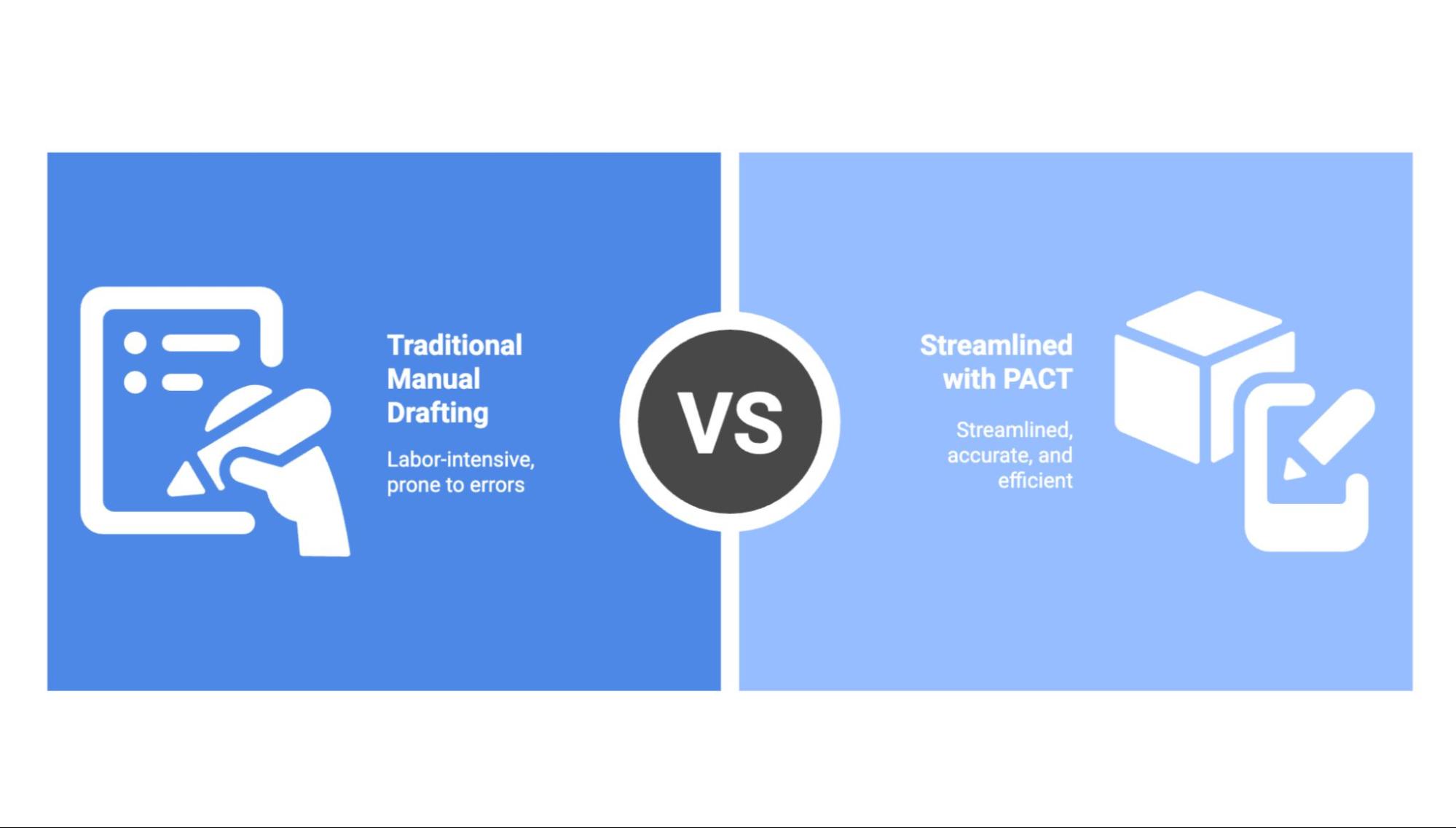In our previous blog, we explored the complete journey of Contract Lifecycle Management(CLM) from creation to renewal.
Now, let’s dive deeper into the first and most crucial stage of the lifecycle: Contract Creation.
Contract creation is where every business relationship begins. It’s the foundation of trust, clarity, and compliance, yet for many organizations, it’s also where inefficiencies and risks first emerge.
In this article, we’ll explore what contract creation truly means, why it matters, and how modern solutions like PACT are transforming this once time-consuming step into a faster, more consistent, and more collaborative process.
Contract creation is the process of drafting, structuring, and finalizing a legal agreement between two or more parties. It defines the terms of engagement, outlining obligations, responsibilities, deliverables, and timelines that govern how the relationship will operate.
Traditionally, this process has relied heavily on manual work starting from scratch in Word documents, copying clauses from old agreements, and managing feedback through endless email threads. But in today’s business world, where speed, accuracy, and collaboration are essential, this manual approach no longer scales.
Every organization, from startups to global enterprises, runs on contracts. These agreements define vendor relationships, customer commitments, partnership terms, and employee obligations. When the creation process is inefficient or inconsistent, it can lead to:
In contrast, a well-structured creation process ensures clarity, compliance, and control, laying a strong foundation for smooth negotiation, faster execution, and long-term value realization.
In many organizations, contract creation still looks something like this:
While familiar, this method comes with major drawbacks:
Essentially, every new contract feels like starting from scratch.

Creating contracts shouldn’t be a maze of emails, attachments, and scattered spreadsheets, and with PACT, it isn’t.
PACT transforms contract creation into a guided, transparent, and data-driven experience, all within Jira.
Every contract in PACT begins with structure and control. Legal and project teams can define pre-approved templates and clause libraries, ensuring every agreement complies with organizational standards.
Because PACT is built natively on Jira, teams can also leverage existing Jira workflows or create their own custom workflows and templates to match their organization’s unique contract management process.This flexibility allows every department, from Legal to Operations to align PACT with their exact business needs.
No more starting from scratch. Users can create a new contract directly from the PACT Home page dashboard, based on the configuration set by the admin or project team.
After the contract is created, users can view all contract details and related fields in the Contract Details Table, while the Contract List displays all contracts in one place where they can easily sort, filter, and refresh the list as needed.
Once a contract is created, PACT keeps it moving intelligently.
Contracts automatically route through Jira-powered workflows, sending them to the right reviewers and approvers at the right stage.
Users can:
This ensures that no contract gets stuck, and every team stays aligned from creation through approval.
With PACT, contract creation evolves from a manual, fragmented process into a guided, intelligent, and fully configurable workflow.
Teams gain the flexibility to use Jira’s existing workflows or build their own, ensuring every agreement starts strong with structure, consistency, and confidence.

Switching to a unified contract creation process delivers real-world improvements:
Effective contract creation sets the stage for everything that follows negotiation, approval, execution, and performance.
By automating this first step, organizations not only gain efficiency but also build a strong foundation for better collaboration and negotiation, the focus of our next blog in this CLM series.